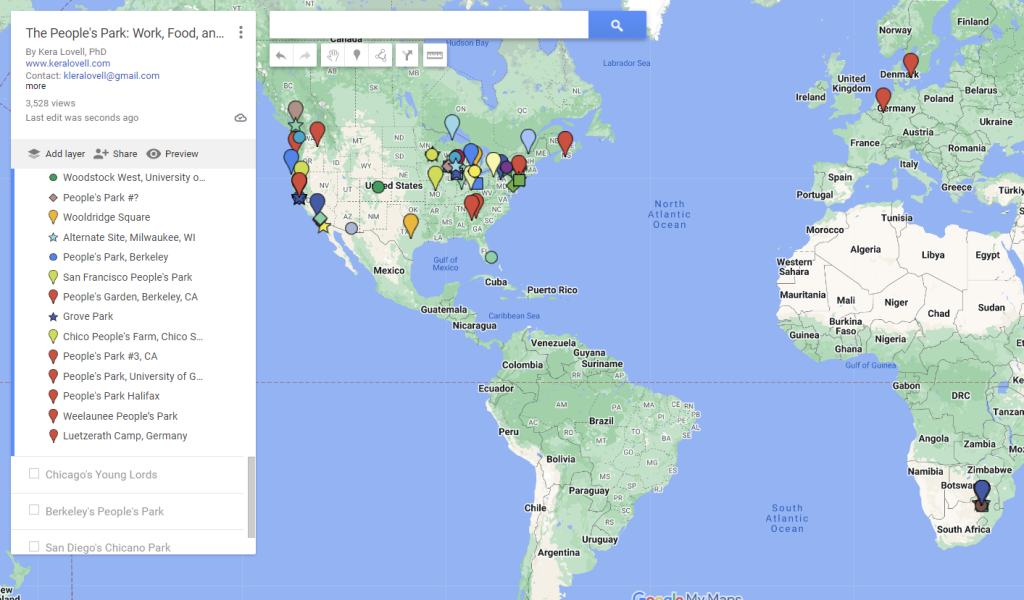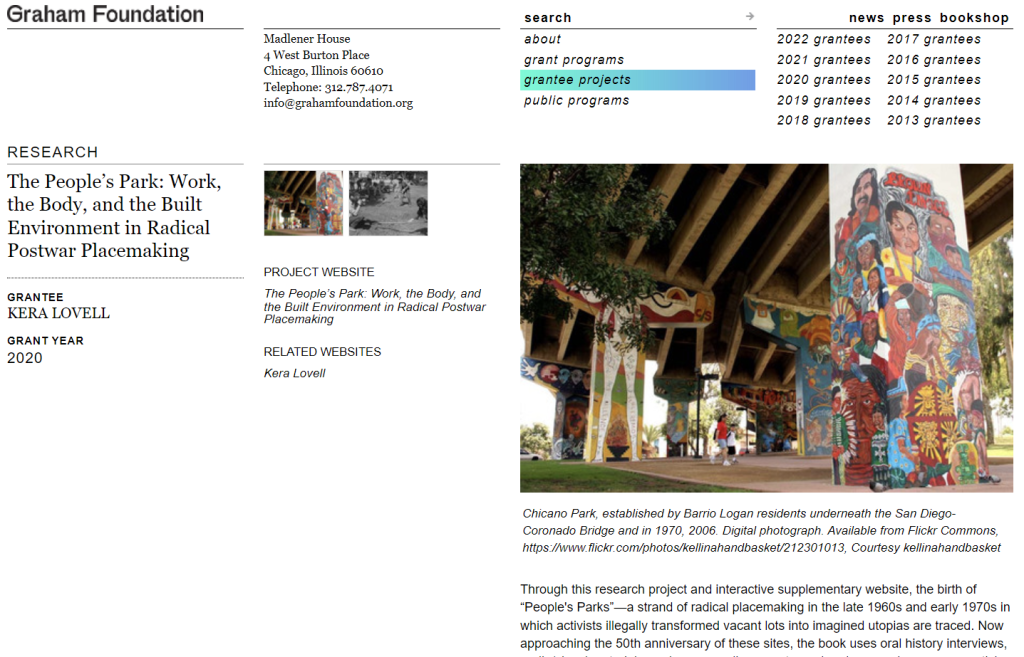
As an expansion of my dissertation, my book project titled The People’s Park: Work, the Body, and the Built Environment in Radical Postwar Placemaking traces the origins of insurgent park creation as a widespread tactic of civil disobedience in the late Vietnam War era. Using oral history interviews and archival research from collections across five states, the book documents how activist coalitions illegally transformed more than forty vacant lots into what they called “People’s Parks” during the long 1970s. In particular, the book project examines how key components of these parks, including food production, landscape design, art, and the underground press shaped activists’ memories of these spaces. Because my research focuses on identity, my work offers an intersectional analysis of these spaces with a focus on race, gender, and sexuality. My articles, “Free Food, Free Space” (American Studies Journal) and “Everyone Gets a Blister” (Women’s Studies Quarterly) both explore women’s work in shaping the visual and material culture of these parks, illuminating how women activists struggled to create space within this largely white male-dominated protest movement. For park creators of color, such as those at San Diego’s Chicano Park to Chicago’s Poor People’s Park, park creation meant challenging police brutality as systemic racism. By putting these park creations in conversation with contemporary protests, my research offers historical perspective to growing protests about the right to space due to continued struggles over urban renewal amidst the growing housing crisis.
In 2020 I was awarded a research grant by the Graham Foundation to conduct an international research trip from Seoul to D.C. to collect archival data at the Library of Congress. This research is in the process of being published in two chapters in edited collections.

As an extension of my dissertation research, my project proposal for the 2015-2016 National Geographic Digital Storytelling Fulbright, awarded semi-finalist, focuses on the relationship between space and power. The project, titled “Grass/Roots,” compares and maps spatial and environmental power by analyzing how people occupy, reclaim, and create public green spaces in South Africa, New Zealand, and the UK. The project combines ethnographic interviews, site and event documentations, weekly self-produced informational graphics, and a cumulative cultural atlas illuminating connections among my case studies and their intertwined colonial histories.